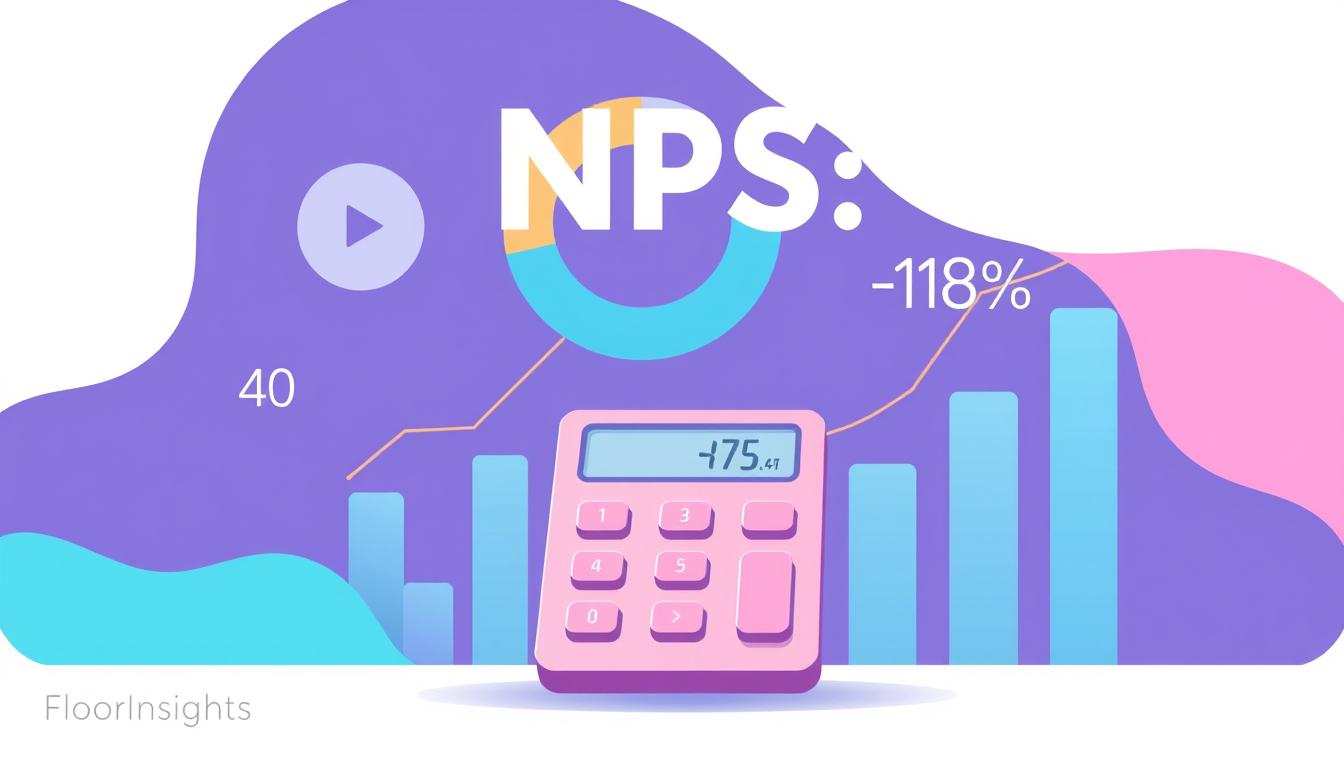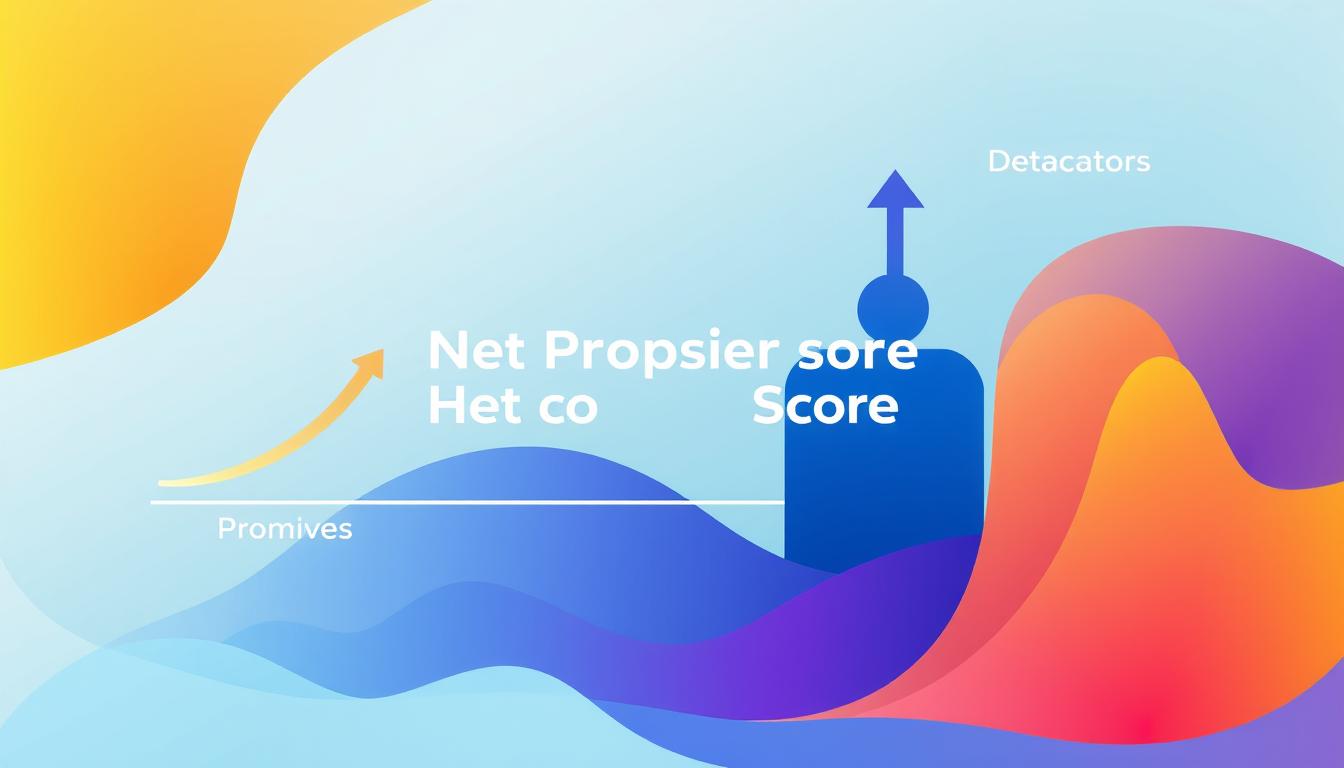In today’s highly competitive landscape of financial institutions in India, customer trust is paramount. The Net Promoter Score (NPS) emerges as a crucial metric for assessing and enhancing this trust. As we navigate through the financial services sector, we observe how NPS becomes more than just a score; it reflects customer loyalty and satisfaction. Our understanding of NPS, rooted in the research by Bain & Company, reveals that it serves as a vital tool in capturing customer feedback and facilitating ongoing improvement. By effectively implementing NPS, we can strengthen relationships with our clients, ensuring a trustworthy and reliable financial experience.
Key Takeaways
- Trust plays a critical role in financial services.
- NPS helps assess and enhance customer loyalty.
- Implementing NPS can strengthen relationships with clients.
- The methodology of NPS is grounded in comprehensive research.
- NPS provides actionable insights for continuous improvement.
Understanding the Importance of Trust in Financial Services
Trust serves as a fundamental element in financial services, shaping the overall success of customer relationships. Without trust, customers hesitate to engage with banking, investment, and insurance institutions. Financial credibility becomes a primary factor influencing customer confidence. Our ability to foster a trusting environment can greatly enhance the longevity of these essential relationships.
In today’s market, customers prioritize working with financial institutions that demonstrate transparency and reliability. Trust directly affects their decision-making process while selecting a service provider. When customers perceive high levels of trust in financial services, they are more inclined to remain loyal, facilitate transactions, and share their experiences with peers.
To illustrate the importance of trust, consider the following key factors:
- Transparency: Communicating openly about fees, services, and potential risks fosters a trustworthy environment.
- Reliability: Meeting expectations consistently solidifies financial credibility.
- Customer Engagement: Actively listening to clients enhances customer confidence, showing that their opinions matter.
Building trust often results in a positive feedback loop, where satisfied customers naturally refer others. Establishing a reputation as a trustworthy financial service provider not only helps retain existing customers but also attracts new ones. This creates a robust ecosystem of support and reliability essential for growth.
Ultimately, we recognize that trust in financial services is not merely beneficial; it serves as the cornerstone of sustainable customer relationships. By prioritizing trust, we pave the way for a thriving financial environment that mutually benefits both institutions and clients.
The Role of Customer Feedback in Building Trust
Customer feedback plays a pivotal role in the trust building process for financial institutions. Understanding customer perceptions enables us to enhance our services, ultimately fostering a stronger bond with our clients. Implementing effective feedback mechanisms, such as customer satisfaction surveys and feedback forms, allows us to gain valuable insights into customer engagement.
These feedback mechanisms serve as critical tools for assessing customer sentiment. They help decipher what our clients value and where we can improve. According to research, companies that actively solicit customer feedback tend to build greater trust and loyalty. This commitment to listening to our customers shows that we prioritize their needs and experiences.
Moreover, the feedback we gather provides actionable data, helping us adapt our strategies to better serve our clients. By analyzing this information, financial institutions can identify trends and make informed decisions that cater to evolving customer preferences. The ongoing dialogue with our customers builds a foundation of trust, essential for long-term relationships.
| Feedback Mechanism | Purpose | Benefits |
|---|---|---|
| Customer Satisfaction Surveys | Gauge customer satisfaction levels | Identify areas for improvement |
| Focus Groups | Gather in-depth customer insights | Foster customer engagement |
| Feedback Forms | Collect real-time feedback | Improve service delivery |
| Customer Interviews | Understand customer motivations | Enhance trust building initiatives |
Investing in customer feedback programs not only improves services but also constructs a transparent communication channel. This openness reinforces our commitment to put our clients first, ultimately leading to lasting relationships based on trust. By continuously refining our approach, we ensure that each customer feels valued and heard.
What is the Net Promoter Score?
The Net Promoter Score serves as a crucial metric for assessing customer loyalty in various sectors, especially in financial services. Understanding the Net Promoter Score definition allows us to grasp the significance of this tool in fostering enhanced relationships with clients.
The Origins of NPS
Fred Reichheld introduced the Net Promoter Score concept in his book, *The Ultimate Question*. His framework revolves around gauging customer satisfaction through a straightforward query: “On a scale from 0 to 10, how likely are you to recommend our service to a friend or colleague?” This innovative approach highlighted the correlation between customer feedback and loyalty, emphasizing that promoters would actively drive business growth through recommendations.
How NPS is Calculated
The NPS calculation is derived from customer responses to this pivotal question. Customers are categorized into three groups:
- Promoters (9-10): Loyal customers who are enthusiastic about the brand and likely to recommend it.
- Passives (7-8): Satisfied but unenthusiastic customers who may easily switch to competitors.
- Detractors (0-6): Unhappy customers who could damage the brand through negative feedback.
To find the NPS, we subtract the percentage of detractors from the percentage of promoters. This score ultimately serves as a customer loyalty measurement, helping institutions pinpoint how well they meet customer needs.
| Customer Category | Score Range | Impact on Business |
|---|---|---|
| Promoters | 9-10 | Encourage growth through referrals |
| Passives | 7-8 | Could switch allegiance easily |
| Detractors | 0-6 | Harm reputation and growth potential |
This structured methodology in NPS calculation fosters a comprehensive understanding of customer sentiment, ultimately guiding financial institutions in their strategy for customer retention and loyalty enhancement.
Why Financial Institutions Should Utilize NPS
As financial institutions seek to strengthen their connection with customers, adopting the Net Promoter Score (NPS) can be an invaluable strategy. NPS serves as a pivotal tool in understanding customer sentiment, offering insights into both loyalty and satisfaction. By leveraging this robust metric, institutions can foster stronger relationships and enhance overall service delivery.
Measuring Customer Loyalty and Satisfaction
NPS for financial institutions provides a straightforward method of customer loyalty measurement. It allows organizations to gauge how likely customers are to recommend their services to others. A high score typically reflects strong loyalty, while lower scores can highlight areas needing improvement. The benefits of NPS extend beyond mere numerical evaluation; it sparks meaningful dialogue between customers and service providers.
Engaging in client satisfaction surveys that incorporate NPS questions can unearth valuable insights. These surveys not only highlight how customers feel about their current experiences but also guide institutions in making data-driven decisions. By consistently measuring and analyzing NPS, we can identify trends, adjust strategies, and ultimately enhance customer experiences.
Understanding and acting on customer feedback through NPS can create a cycle of continuous improvement within financial institutions. Through effective use of this metric, we can cultivate a more loyal customer base, which in turn drives business growth.

Implementing NPS in Financial Services
To successfully implement NPS in financial services, we must focus on integrating effective customer feedback strategies. An NPS strategy begins with designing surveys that are straightforward and engaging, ensuring that the questions align with our goals of enhancing the customer experience in finance.
Here are some key steps to guide us through the implementation process:
- Define Objectives: Establish clear goals for what we hope to achieve by implementing NPS. This might include boosting customer loyalty, increasing retention rates, or identifying areas for improvement.
- Design the Survey: Create a survey that captures essential financial institutions feedback. The survey should include the standard NPS question along with follow-up queries that delve into specific areas of customer experience.
- Determine Timing: Identify optimal moments to gather feedback. This could be post-interaction with customer service or after significant financial transactions, as timing influences feedback quality.
- Distribute the Surveys: Utilize multiple channels to reach customers effectively, ensuring accessibility and convenience.
- Analyze the Results: Regularly review the data obtained through NPS and other feedback to assess customer sentiment and identify actionable insights.
Implementing NPS will not only enhance our understanding of customer needs but will also play a vital role in shaping the overall customer experience in finance. By focusing on these critical elements, we can establish a robust framework for gathering valuable insights.
| Step | Description |
|---|---|
| Define Objectives | Establish clear goals to enhance customer loyalty and retention. |
| Design the Survey | Create engaging surveys that align with NPS objectives. |
| Determine Timing | Identify the best moments to gather customer feedback. |
| Distribute the Surveys | Use various channels to ensure accessibility for all customers. |
| Analyze the Results | Regularly review feedback to uncover actionable insights. |
Analyzing NPS Feedback for Improvement
Understanding and leveraging NPS feedback analysis allows financial institutions to enhance their offerings significantly. By identifying customer insights, we can unveil specific strengths and weaknesses within our customer experience. This understanding is crucial in maintaining and improving trust among our clientele.
Identifying Strengths and Weaknesses
For financial services, the process of interpreting NPS feedback goes beyond numbers; it requires strategic analysis. We need to focus on recognizing patterns and trends within the feedback. Highlighted below are some effective techniques we can employ for a thorough analysis:
- Categorizing Feedback: Classifying comments by positive, negative, or neutral sentiments aids in pinpointing exact areas needing improvement.
- Utilizing Data Visualization: Tools for visualizing data can simplify complex information, making patterns more discernible.
- Cross-Referencing with Other Metrics: Comparing NPS scores with other key performance indicators, such as customer satisfaction scores or retention rates, enhances our understanding of customer sentiment.
- Engaging in Open-Ended Questions: Encouraging detailed feedback can surface deeper insights, revealing nuances that numeric ratings might miss.
Turning these insights into actionable strategies is essential. For instance, integrating customer suggestions into product development initiatives or making service adjustments based on recurring themes can significantly enhance customer experience. This proactive approach not only fosters loyalty but also positions our financial services as responsive and customer-centric.
In sum, implementing robust NPS feedback analysis allows us to stay aligned with our customers’ expectations. By focusing on identifying customer insights, we can drive initiatives aimed at improving customer experience, ultimately strengthening our relationship with clients in the financial services sector.
Case Studies: Success Stories of NPS Implementation
The implementation of Net Promoter Score (NPS) systems in financial institutions provides rich insights into enhancing customer loyalty. NPS case studies highlight the transformative impact of successful NPS use among leading banks and financial service firms. Various institutions have leveraged NPS not just as a measurement tool but as a strategic framework driving systematic financial institutions improvements.
One notable example stems from a large financial institution that redefined its customer experience strategy. By deploying tailored feedback mechanisms, the institution managed to elevate its customer loyalty success dramatically. The institution’s leaders utilized data to identify service gaps and seize opportunities for enhancing client relationships.
Another compelling case comes from a global bank that integrated NPS into its operational framework, significantly improving engagement with both existing and potential customers. By prioritizing customer feedback, the bank recorded a marked increase in loyalty and satisfaction, evident in its stellar growth metrics. Such cases delineate the power of NPS in driving customer retention strategies in the highly competitive financial sector.
To encapsulate the success stories we’ve seen, here’s a comparative look at several institutions that implemented NPS:
| Financial Institution | Initial NPS Score | Post-Implementation NPS Score | Improvements Achieved |
|---|---|---|---|
| Global Bank A | 25 | 60 | Enhanced customer service response time by 30% |
| Regional Bank B | 15 | 50 | Increased customer retention by 20% |
| National Bank C | 35 | 70 | Boosted cross-selling opportunities by 15% |
Through these NPS case studies, we see that financial institutions can realize remarkable shifts in customer loyalty success. Fostering a culture of feedback is essential for ongoing improvements in service delivery.
Best Practices for Using NPS Effectively
In the realm of financial services, implementing NPS effectively can significantly enhance customer relationships and trust. Following NPS best practices enables us to optimize customer feedback and make informed business decisions.
When crafting survey questions, clarity and brevity are paramount. We must ensure that questions are straightforward, as this promotes higher response rates. Open-ended questions can provide nuanced insights, ensuring we capture the full spectrum of customer sentiment.
Analyzing results with a systematic approach is crucial in understanding customer loyalty. Segmenting feedback allows us to identify trends specific to different customer demographics. Utilizing advanced analytics tools can assist in visualizing these trends, making it easier to implement necessary changes.
Implementing regular feedback loops fosters a culture of continuous improvement. This strategy aligns with effective NPS usage, as customers appreciate knowing their opinions lead to tangible changes. Engaging stakeholders during this process ensures that feedback translates into actionable strategies.
Finally, consider benchmarking against industry standards. Understanding where we stand relative to competitors helps refine our financial services strategies. By doing so, we enhance customer satisfaction and build lasting trust, ultimately positioning ourselves as leaders in the financial industry.
Conclusion
In conclusion, the NPS impact on customer trust in finance cannot be overstated. As we have seen throughout our exploration, building and maintaining trust is fundamental for financial institutions aiming to foster long-term relationships with their clients. By harnessing customer feedback through NPS, we can gain invaluable insights that not only assess satisfaction but also inform our strategies for enhancing customer loyalty.
Looking at the future of financial institutions in India, it becomes clear that a strategic approach to NPS is essential. The competitive landscape necessitates continuous improvement and agility in responding to customer needs. By prioritizing NPS as a cornerstone of our customer engagement efforts, we equip ourselves to better meet expectations and solidify customer trust in finance.
Ultimately, the focus should not merely be on measuring data, but on translating that data into actionable strategies. By doing so, we position ourselves to thrive in the evolving financial landscape, ensuring we are not just meeting industry standards but setting them. Together, we can pave the way for a future where our institutions are synonymous with integrity, reliability, and unwavering customer loyalty.
FAQ
What is the Net Promoter Score (NPS) and why is it important for financial institutions?
The Net Promoter Score (NPS) is a metric that gauges customer loyalty by asking customers how likely they are to recommend a company’s services. For financial institutions, NPS is vital as it helps assess customer trust and satisfaction, ultimately influencing long-term relationships and customer loyalty.
How can customer feedback enhance trust in financial services?
Customer feedback is essential for building trust, as it provides insights into customers’ perceptions. By utilizing client satisfaction surveys and customer satisfaction survey templates, financial institutions can identify areas for improvement, thereby fostering greater transparency and trust with their clients.
What are effective methods for implementing NPS in financial services?
Implementing NPS involves designing well-structured surveys and determining the right moments to gather feedback. Our approach includes integrating NPS into customer feedback strategies and regularly analyzing the data using methods highlighted in resources like Qualtrics and Harvard Business Review.
How can we analyze NPS feedback for better customer experience?
To analyze NPS feedback effectively, we employ techniques that allow us to identify strengths and weaknesses in our services. Understanding customer insights through feedback enables us to make informed decisions about improving the customer experience in finance, aligning with best practices from sources like the Nielsen Norman Group.
Can you provide examples of successful NPS implementation in financial institutions?
Yes, numerous case studies illustrate how financial institutions have successfully employed NPS to improve customer loyalty and trust. These success stories reveal strategies that led to substantive improvements in their services and customer relationships, as documented by Bain & Company and other industry leaders.
What are some best practices for using NPS effectively in our organization?
Best practices for effective NPS usage include crafting clear and concise survey questions, timely feedback collection, and systematically analyzing results for actionable insights. Resources from CustomerGauge and Forrester Research provide detailed guidance on optimizing customer feedback to maximize NPS impact.






